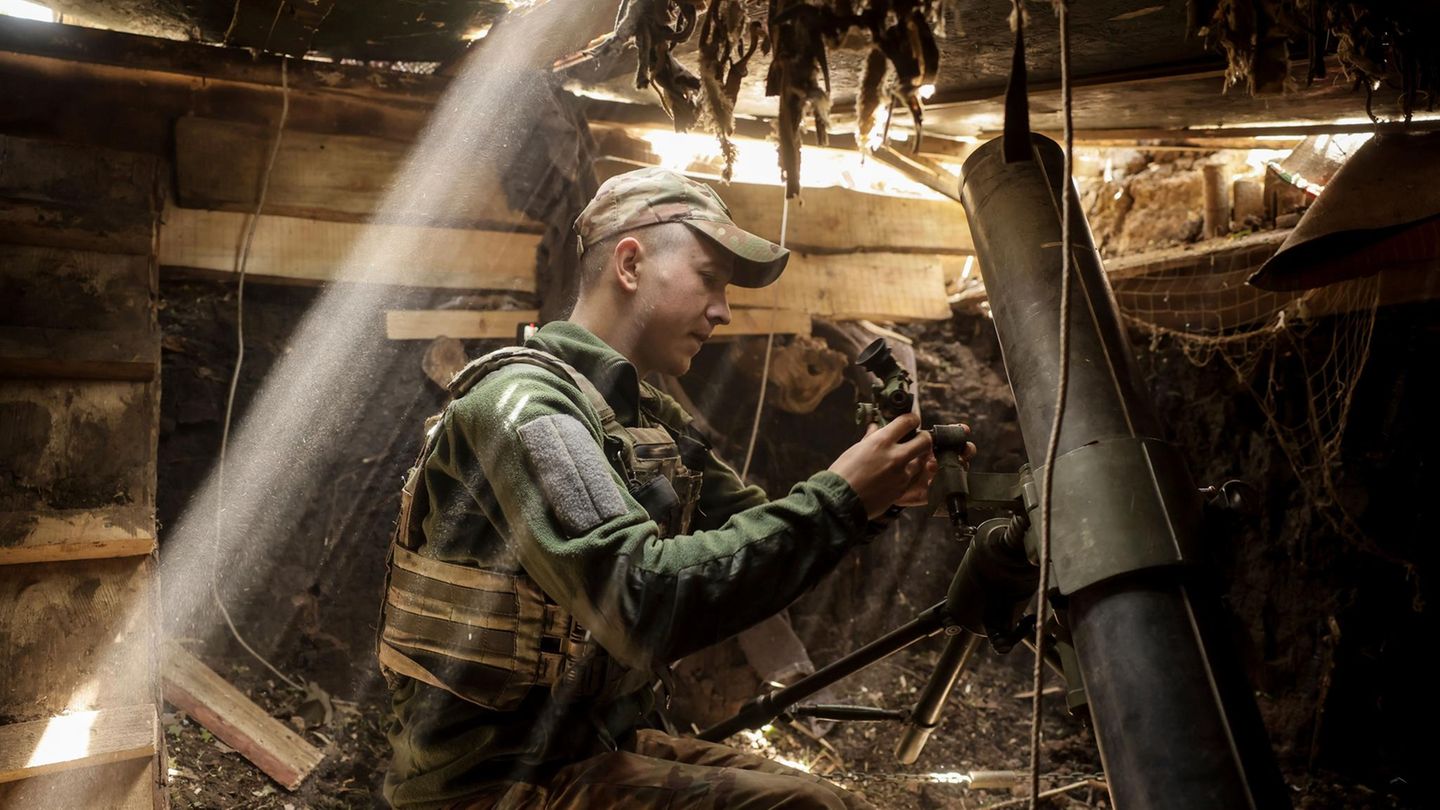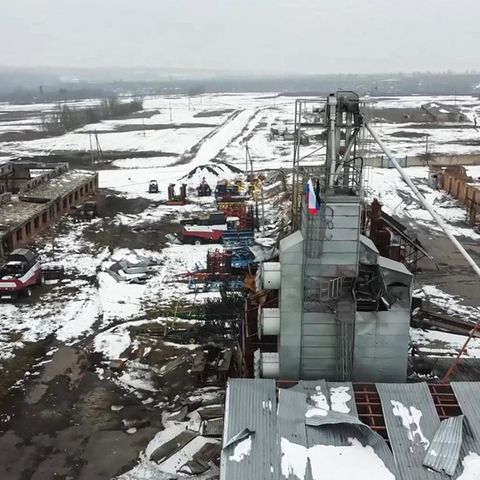War against Ukraine
Wortcover and shelter-Putin’s new drone tactics in the floor war
Copy the current link
Add to the memorial list
Russian drone boilers areolate Ukrainian troops, block supply routes, and sliding bombs grumble the front positions. Putin’s new tactics in the War of War.
In the western audience, the idea has prevailed that Putin’s army is more or less primitive-brutal towards its own losses-a keyword is the “wave attacks” that actually do not exist in the Ukraine decline. Experts such as Mark Takacs, who points out that in no country the war is so science as science as in the former USSR and later in Russia, are in the minority.
The rise of the drone war
Since the failed summer offensive of the Ukrainians in 2023, the Russians are constantly pushing the defenders back. The perfection of the drone war makes attacks and movements on the ground and makes them lost. And here the Ukraine can stand up to the Russians. Unlike other weapon systems such as tanks or air defense systems, it is not hopelessly inferior.
However, the latest improvement in the tactical approach of the Russians is based, especially on small FPV drones. In addition to FPV drones, the Russians are also increasingly using lancet drones, which are equipped with higher precision and greater explosive power, which reinforces the threat to Ukrainian positions and vehicles. The heading calls it “strangle control and a suggestion hammer”, the term “triple stranger” was also used – the name “drone boiler” would also be suitable.
How the drone boiler works
What does that mean? The Russians manage to regain the rule over the lower airspace in which the small drones operate. They use them to systematically and permanently block all connection paths of the Ukrainian front troops. Nobody comes in, nobody comes out. A classic boiler, only that the Ukrainian troops are not surrounded by Russian soldiers. This tactic is reminiscent of historical siege strategies, such as those used in the Battle of Stalingrad, but modernized by the use of unmanned systems that make physical surrounding superfluous. On cards, the area continues to be “under Ukrainian control” – only that the Ukrainians can hardly enter it due to the drone threat.
Four phases of Russian tactics
However, this inclusion is only one element. In fact, the process of the Russians can be divided into four phases. First of all, the prerequisites for the use of drones must be created. The Russians move close to the vital supply lines of the Ukrainians. For this they are looking for weaknesses in the front that are near a Ukrainian base. The defenders are able to keep their bastions and to defend tough, but cannot build up a tiered line of defense along the over 1000 kilometer front with mutual positions.
There are large, hardly or weakly occupied gaps between the strong points. Here the Russians seep into small, mobile troops as soon as they have recognized a weak point and drive a wedge into the Ukrainian area – so far until left and right of the actual goal were created. These don’t have to close like pliers.
The drones operate from these wedges. The nominal range says little for cable -controlled drones, as these can be precisely controlled by fiber optic cables over long distances. The Russians have to approach the lifeline of the Ukrainians on less than ten kilometers. Then start cutting them down slowly and at the same time worn the crew of the actual goal with drones, artillery and sliding bombs.
The trap snaps too
And then the trap grabs. The Russians attack the central position, but not to storm them. Their attack is intended to force the defenders to fill all positions and to send units hidden in the hinterland directly to the front line. Once this has happened, their drones force the Ukrainians to look for protection in their bunkers, cellars and trenches. There they are somewhat secure in front of the drones with their small explosives.
But the storm is missing. Now these positions are systematically destroyed by artillery and Russian sliding bombs. The Russians use bombs of 1.5 and three tons, which even heavy fastenings cannot resist. A dodging or withdrawal is not possible due to the Russian drone superiority. They circle over the combat area. Videos show how these drones patrol over the access roads – continuously and in couples they monitor the routes. Drones that are controlled by fiber optic cables cannot be electronically disturbed. Russia has massively expanded its drone production since 2023 and is estimated to produce several thousand FPV drones per month. Coming through vehicles is impossible, the troops on the front are isolated.
Demonstration and psychological effect
“It is a very grueling warfare,” said Nick Reynolds, research assistant for land warfare at the Royal United Services Institute (Rusi). “Due to the drones, the Ukraine is forced to fill the front line with static defense positions. The digging in and all of these protective measures are well suited to reduce the losses from artillery or FPVs, but lubricating bombs destroy and bury people. What the Ukrainian armed forces holds on site is the combined threat, artillery, artillery and artillery and artillery and Drones, especially FPV and tactical unmanned aircraft. “
Sufficient supply becomes impossible. The isolation from drone cauldron not only has a logistical effect, but also psychologically on the Ukrainian troops, since the constant threat of drones and sliding bombs undermines morality and complicates defense. Wounded and seriously injured, who could be saved in a hospital, remain in the positions that are slowly leveled. At some point they have to be abandoned. The surviving defenders then try to settle through forests and along tree groups in the smallest groups – always hunted by the Russian drones.
The drone boiler in Kursk
On a large scale, the Russians first reached such a drone kettle at the Ukrainian front lead in the Kursk region in the summer of 2024. There the Ukrainians had built a defense belt around the small town of Sudscha they conquered. But when the Russians managed to push the front floors on the root and to work to the only access road to a few kilometers, they built a total drone control over the route. These drones sealed the fate of the Ukrainians at Sudscha, even if the spectacular Russian surprise attack through the tunnels of a gas pipeline attracted more attention.
Strategic effects
This method is intended to limit the Russian losses and increase those of the Ukrainians. The Russians are exposing to the conquest of their side prey and the threatened attack and will accept losses in this phase. After that, however, they rely on the effect of their drones and lubricants without endangering their own staff.
The Ukrainians, on the other hand, can no longer lead a successful resistant defense on which their strategic calculation is based. This says to keep well -fortified positions for a while, to add severe losses to the stormy attacker and – ideally – to withdraw in time in order to move into new fortifications a few kilometers further. So the Russians would have to bear the costs of the attack without ever achieving a real breakthrough. With the lower stamp of the Russians, it would take several years for them to reach the DNEPR, and their strength would be exhausted long before.
Optimization of the war of wear
The concept of a drone boiler reverses these conditions and “optimizes” the war of wear and tear that leads Putin. The Russians only use infantrymen at times, only in smaller groups. However, they try to lure larger troops of Ukraine to the front, to fix them there and to switch off as completely as possible. With this they pack Kyiv in the most vulnerable place: the troop strength on the front.
Limits and countermeasures
One should not forget that this is a model that only promises 100 % success in theory. In reality, it can look very different, for example if the Russians fail to work on the flanks of the actual goal, or if Kiev can concentrate on their own drones, which in turn fight the Russians drawn together. For example, by stocking the Russian supply routes with mines or succeeding in discovering and eliminating the opponent’s drone operators. What remains are the huge slide bombs. Russia wants to produce 75,000 pieces in 2025, which would be around 205 bombs a day. This massive production enables Russia to further increase the intensity of the attacks on Ukrainian positions, which further exacerbates the strategic situation for Ukraine.
Challenges for Ukraine
The Russian sliding bombs can only be stopped if the Ukrainians succeed in attacking the carrier aircraft. This is hardly imaginable in the air because of the Russian air defense. The delivery of western weapon systems such as F-16 fighter jets, which have been used in a limited number in Ukraine since 2024, could improve the ability to combat Russian carrier aircraft, but requires considerable training for pilots and the provision of modern air-air missiles. On the other hand, attacks would be conceivable if the jets are on the ground – for example with rockets delivered western rockets such as Atacms or Storm Shadow, marching skills or the German Taurus. Weapons of high reach. However, such attacks require precise secret service information from western sources and considerable logistical coordination, which makes implementation a challenge.
Source: Stern
I have been working in the news industry for over 6 years, first as a reporter and now as an editor. I have covered politics extensively, and my work has appeared in major newspapers and online news outlets around the world. In addition to my writing, I also contribute regularly to 24 Hours World.







